West Virginia is mainly known for its beautiful countryside and coal mines, but there’s a lot more to be found here. If you know where to look, you’ll find that the state houses a wealth of different minerals, some of them quite rare in other locales.
So, let’s get down to it and we’ll go over a list of some of the rocks, minerals, and gems of West Virginia and give you an idea of where to begin the hunt!
Rocks and Minerals Found In West Virginia
1. Bituminous Coal
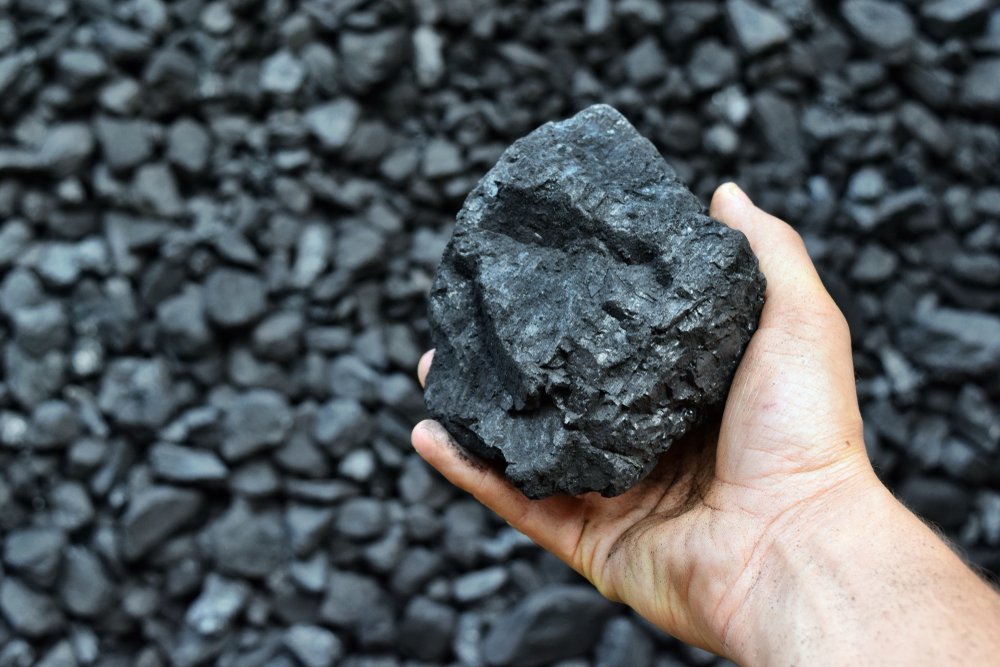
Coal used to make the world go round, and it’s still an important part of energy production. West Virginia is well known for housing a huge amount of it, producing between 11-15% of the total output in the US. That makes it second only to Wyoming.
Bituminous coal, specifically, is a type of coal that’s formed from ancient peat. This peat was formed in ancient wetlands earlier in the planet’s history. Oddly enough, it appears that most coal was deposited within only 2% of the known geological timespan. Bituminous coal represents the vast majority of coal mined, and it’s considered of a higher grade than lignite but below anthracite.
The coal of West Virginia is mainly used in power generation. It turns out that the smaller veins running through Appalachia bear the low sulfur coal required for steel production. Coal is notoriously dangerous to mine, as pockets can contain flammable gasses and the material is toxic to breathe in over time.
Coal can be found in veins across the entire state, with only the Eastern panhandle not bearing any coal deposits. It’s not something collectors jump for, but it’s a huge part of the state’s economy and the modern world.
2. Calcite
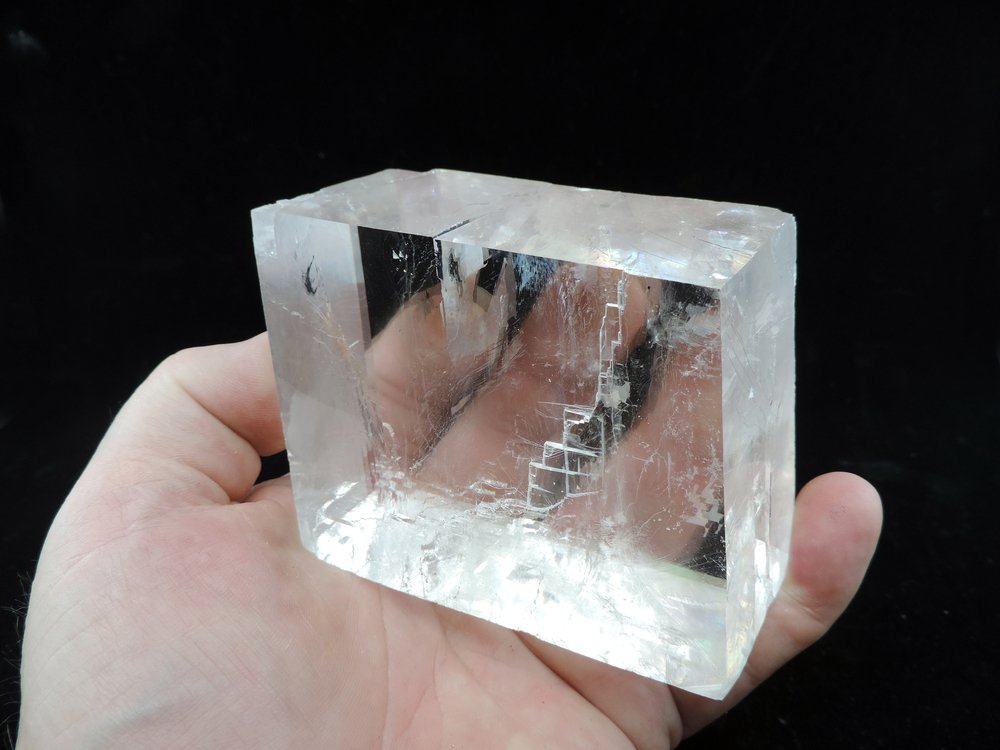
Calcite is one of the various forms of calcium carbonate, often found crystallized throughout limestone deposits. It also forms into crystals on its own and their widely varied colors have been a hit among collectors since the crystals can be quite large. Calcite is the most stable form of calcium carbonate, and it’s a very common mineral.
Calcite can occur in a wide variety of different formations as well. There are actually over 1000 distinct forms recognized by crystallographers. These range from cubic crystals grown on other materials to dogtooth spar which resembles teeth and only occurs in a few locations. The subject of calcite’s crystal habits is fascinating but complicated.
The crystals I’ve seen come out of West Virginia tend to be white and rhombohedral. Which means they look a bit like a slanted cube. There are also some sharper crystals occasionally found with a smokier color and a bit of orange out there. Calcite varies a lot from location to location, and you can find different crystals quite close together when prospecting.
Those curious should start looking for a safe roadcut in Pendleton County. Roadcuts are a common source of great little pockets of calcite and there are other minerals to be had as well.
3. Celestite
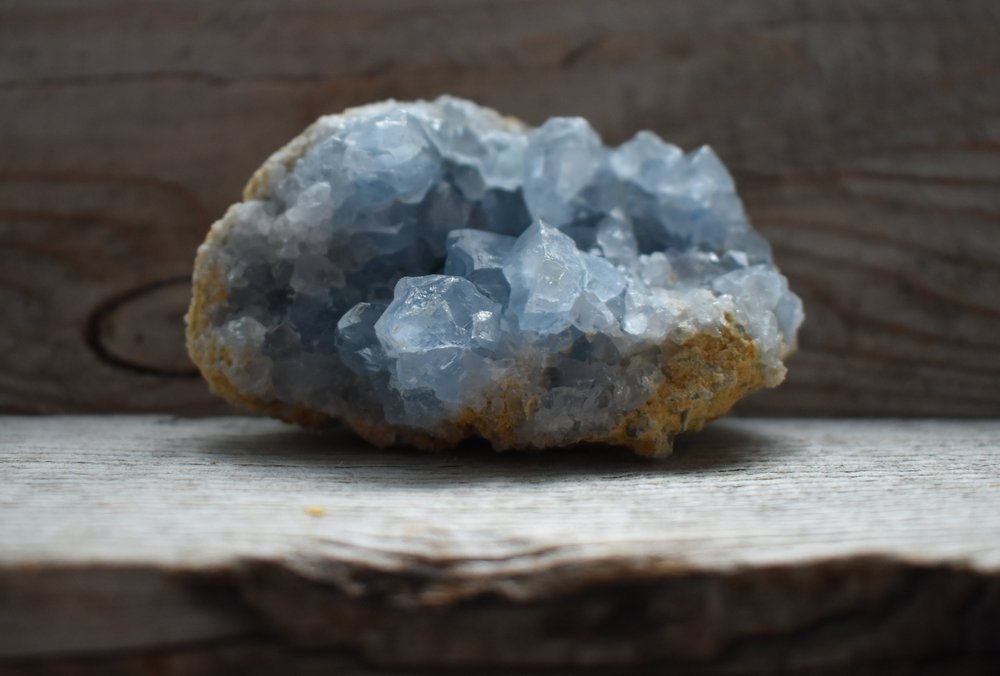
Strontium sulfate forms into these beautiful crystals or gets spread through other rocks and used as an ore for strontium. The metal is used in a wide variety of products and alloys, but that’s not quite what most collectors are looking for. Instead, the most sought-after form is a blue pyramidal crystal.
Celestite is also known as celestine. The latter is the IMA-accepted name, but both are in common use. It’s mainly known to occur in geodes, where it can be found growing on the inside of the exterior shell. The world’s largest geode, an astonishing 35 feet across, has a crystal lining of celestite.
Celestine in West Virginia ranges from a smoky, opaque blue-ish crystal to the highly sought-after blue stuff. This mineral is easily colored by impurities, and there are orange and yellow varieties found at some of the locations. Celestine is a relatively common find in the US, but it’s a bit sparse in West Virginia.
If you’re looking for some then you’ll want to try Knobly Mountain in Mineral County. Some celestite has also emerged from the area of Pendleton County.
4. Silicified Coral
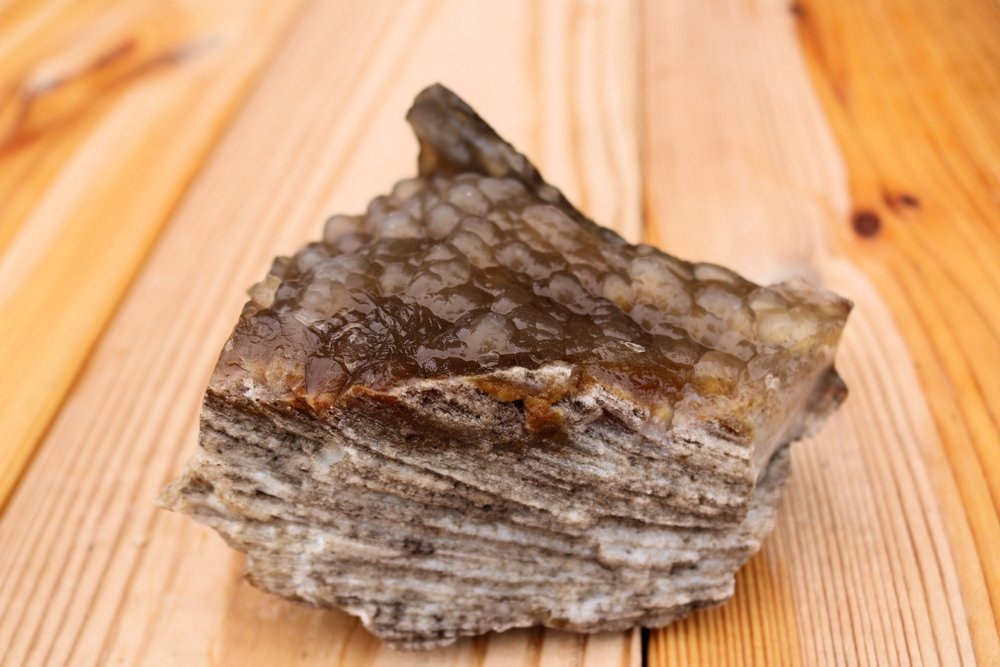
Coral fossils are great, but there are many different types out there for the collector. This particular replacement fossil is often red or blue in color, and the ancient coral skeletons have been entirely replaced with chalcedony. The result is often complete replacement, but it’s more common to find bits that have eroded out of the host rock.
Different types of fossil corals are found across the world. They’re relatively common, most often sold as specimen pieces with part of the exterior of the stone. They’re often cut for jewelry as well, since the chalcedony is hard enough to stand up to wear and take a great polish.
The specific varieties that come out of West Virginia are a blue form and a red form. The blue form resembles blue lace chalcedony in color but bears a distinct interior pattern. The red form will often have yellow and orange tones as well. Some is on the whiter side of things, but it’s easy to see why it’s become the state’s gemstone.
If you’re looking to find some you’ll want to try the Hillsboro area for blue specimens and the areas around Mill Point and Williamsburg for the rest.
5. Siderite
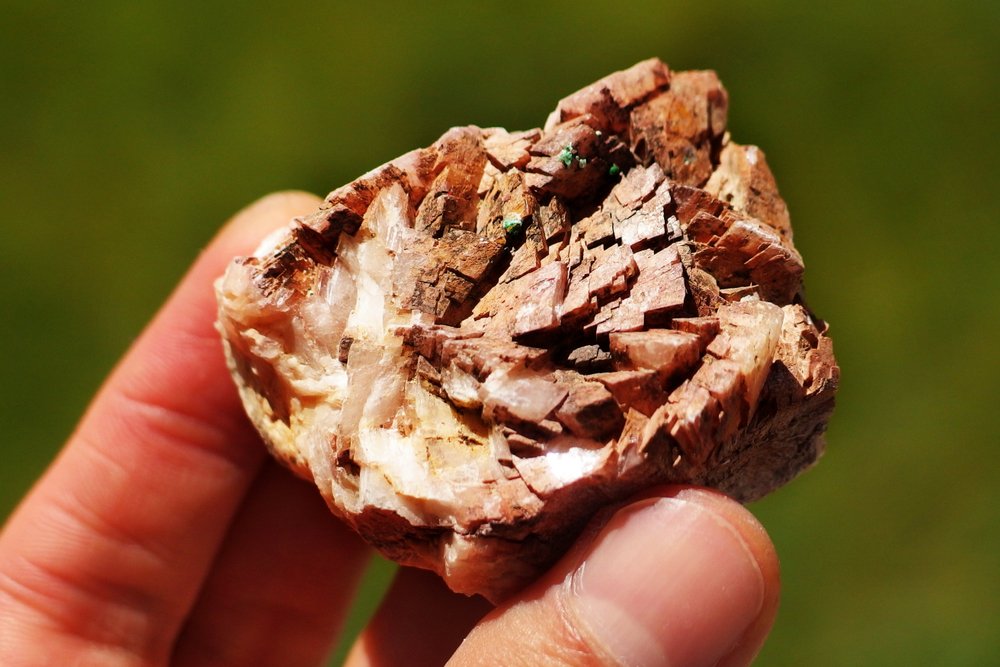
One of the important ores of iron, siderite is found in a few places across West Virginia. It occurs in quite a few different forms. Siderite is actually an iron carbonate mineral, meaning that it’s relatively easy to extract iron for steel production from this stone. It often forms into concretions within the sandstone and is distributed with other minerals in some rocks.
Siderite’s most common form in the US is opaque, bladed crystal clusters. The botryoidal form, comprised of small spheres, is also found. The most sought-after form is the crystalline one, which is a deep orange. Too soft for jewelry, these stones are still sometimes cut as a curiosity for gemstone collectors who can appreciate the skill required to work such a unique material.
The material from West Virginia appears to mainly be in the botryoidal form (or river tumbled) when it’s found. It’s of more use to the metal industry than collectors for the most part, but if you’re willing to put in the effort to hunt you should be able to find a nice sample. Just be aware that you may not find it on the first, or the second, try.
You’ll have to look to waterways to find it, with Strange Creek being one known hot spot.
6. Fluorite
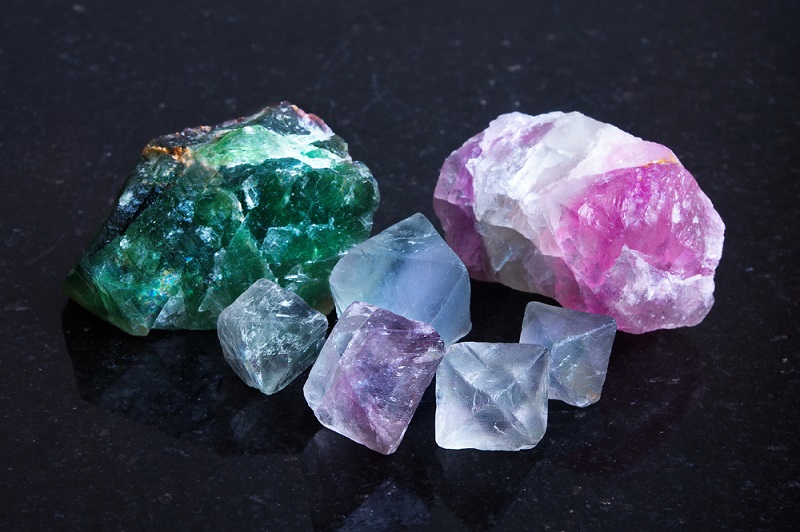
Fluorite is a common, simple mineral that’s found fairly often. It has a wide array of colors, and it’s well-known for having color zoning within the same formation. It’s common to see “rainbow” fluorite sold, which is a combination of green and purple, often with banding. It’s a great mineral for new carvers to work as well, since it’s soft but will take a good polish when finished.
Fluorite is also a source of fluoride for industry. Despite including that dangerous element, fluorite is basically inert unless ground into a powder and chemically processed. Instead, we enjoy it for the wide range of colors that it exhibits due to different elemental impurities in the stone.
Most samples I’ve seen from West Virginia are well-formed purple crystals or clusters that fade into the white form of the mineral. Often a single crystal in the cluster will show color against a white background of uncontaminated fluorite as well. The mineral always varies depending on location.
If you’re trying to find a sample for yourself, you’re best off taking a look around outcrops on Knobly Mountain or the area around Renick.
7. Psilomelane
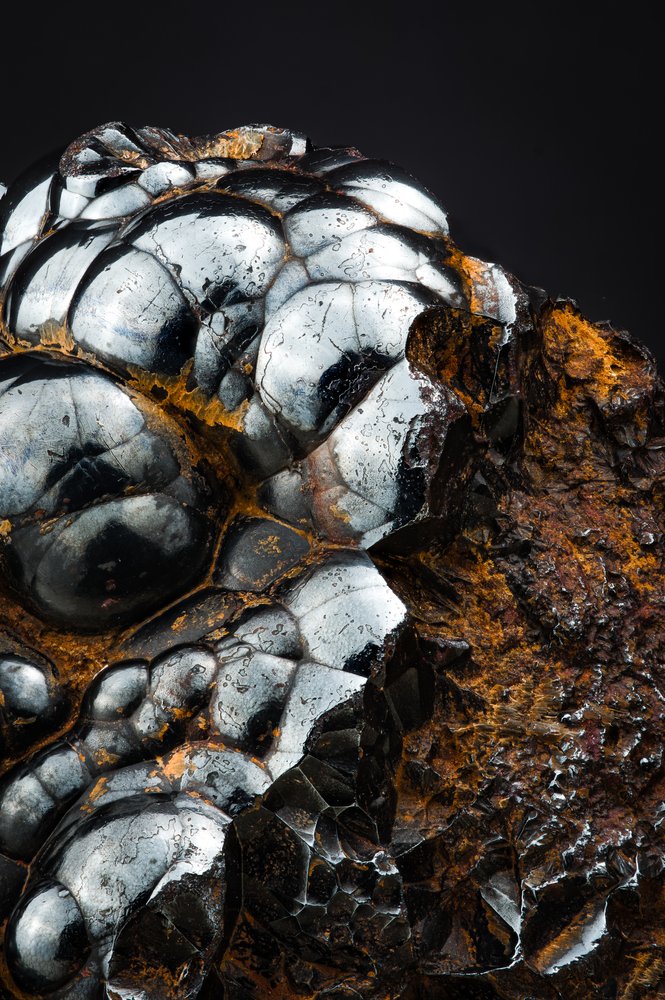
I know two big things about psilomelane: it’s gorgeous and I hate cutting it. Psilomelane is actually a catch-all name for combinations of hydrated manganese minerals and chalcedony. Just for fun, we also have barium and a host of other smaller impurities. The result is a black stone that displays similar patterns to malachite when cut, having silver instead of lighter green. Psilomelane is most often botryoidal, forming in small, interconnected balls.
This combination of metals will wreak havoc on your saw. Clogging it in the same way that cutting soft metals will. Higher grades of material will cut better, but it’s always going to be a mess and you’ll want to be ready to dress your saw blades and clean the wheels. Not all material is suitable for cutting, but the hard botryoidal material sometimes found works great.
West Virginia doesn’t appear to produce gem-grade material, but it’s still something to keep an eye out for. My experiments confirmed material under 5.5 in hardness from California wasn’t worth cutting, but psilomelane can describe many different rocks. If you find a good source you’ll have to run your own experiments.
Psilomelane can be found on the southeastern side of Moss Mountain.
8. Chert/Jasper
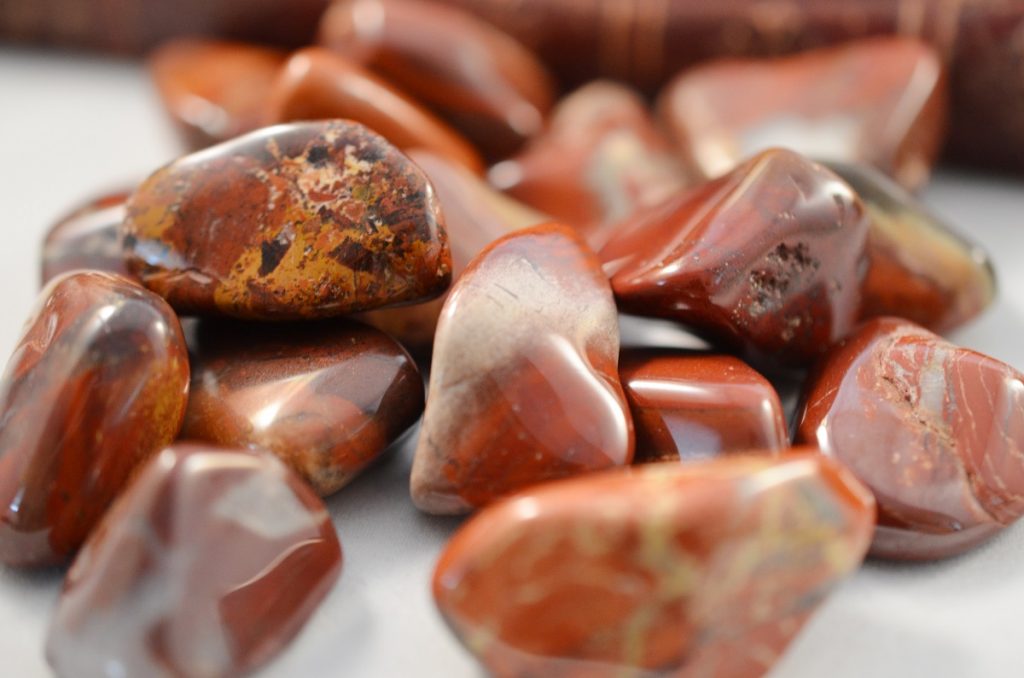
Cryptocrystalline silica is almost a constant across the US. In West Virginia this takes the form of the Huntersville Chert formation. This formation consists of red, yellow, and white chert. Chert is sometimes used as a descriptor for boring jaspers, but in this case there are some winners in the hills.
Chert varies a lot in quality. You’ll find that some pieces simply aren’t suitable for cutting. You should be looking for material that has a waxy, smooth exterior and interesting colors. Nodules larger than a fist can be examined to see if there’s an interesting internal pattern. Unfortunately, when it comes to these minerals the only way to learn to identify the patterns is to get cutting. You might be surprised at the internal makeup of some of these stones.
West Virginia does bear gem-quality chert, suitable for cutting and polishing. Each piece will be individual depending on the impurities that caused the coloration. Darker material is generally older and will have fractures and other structural problems. The good news is that Huntersville Chert is the bedrock for the area, so you may find a crystal or two that formed in a hollow inside the stone.
The best place to access good material is to go through mining dumps near Huntersville, particularly around Possum Hollow. There’s a lot of it, which makes it easy to be picky when you’re prospecting.
9. Quartz
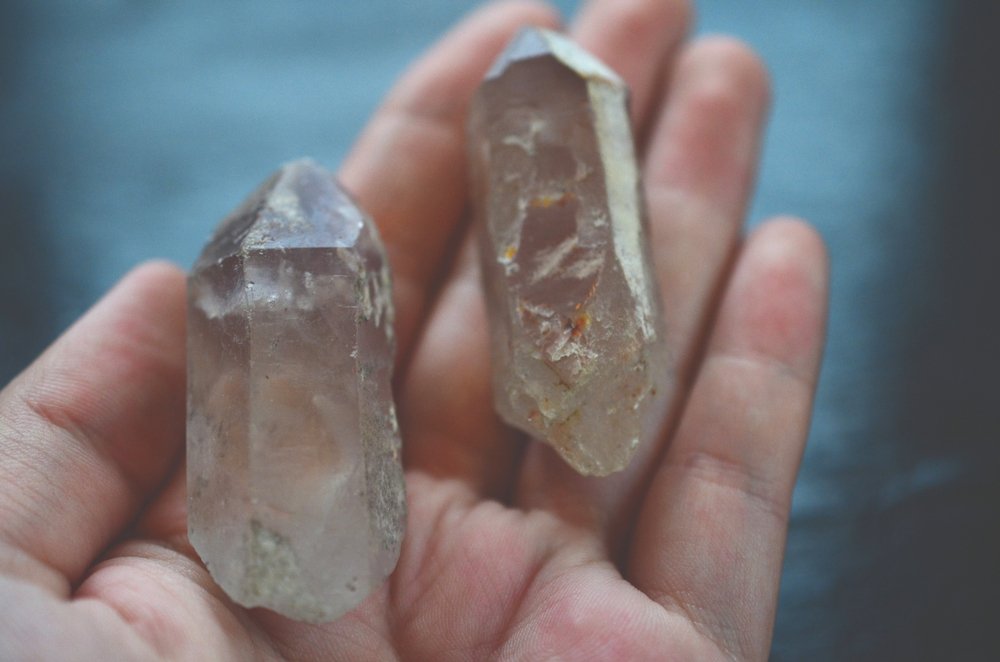
Quartz is the larger crystallized form of silica. Its six-sided, pyramid-topped shape is easy to recognize, and even shops that don’t specialize in rocks carry it on occasion. It’s perhaps the iconic crystal, which most crystals in art are shaped like. It’s commonly found as single points, in clusters, and even lining the inside of geodes.
Quartz is the main mineral of a whole family of gemstones. Those such as amethyst, citrine, and prasiolite are all included in this family. There are also included varieties available. Quartz is the standard for 7.0 hardness on the Moh’s scale, making it just hard enough to not be scratched by most everyday objects.
Quartz in West Virginia tends to be a bit milky and is often orange-stained from iron deposits. Good clusters are still found, but it’s no Arkansas. On the other hand, those with a fascination for double-terminated crystals can find them in this state. They’re a bit different from the Herkimer Diamonds of New York, but still collectible.
If you’re looking for quartz in this state, you should check the areas near Alderson, especially in stone along the roads. This is where many of the double terminated crystals are found, but there are lesser locations spread across the state.
- Online rock and mineral club for collectors of all levels!
- Find community with like-minded rock and mineral enthusiasts.
- Monthly Giveaways!
- Free Access to Entire Digital Library of Products (annual memberships)


